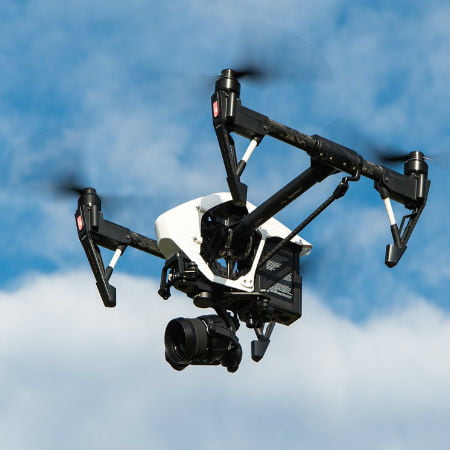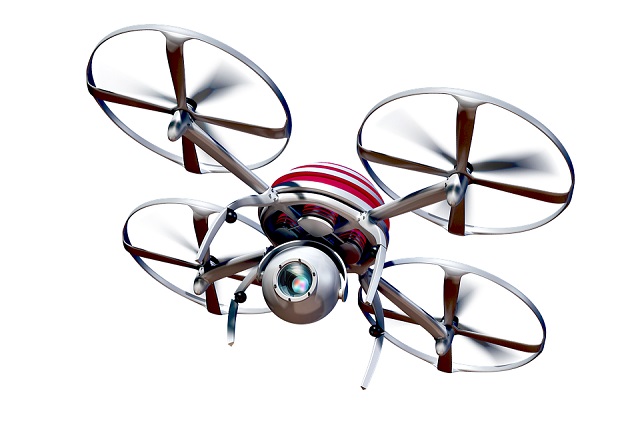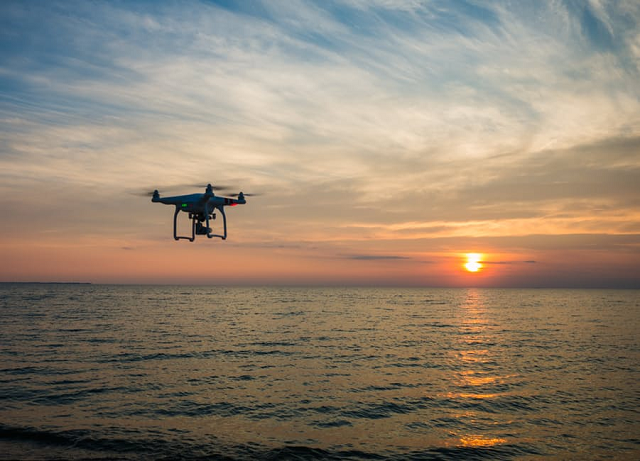
Have you ever wondered why we have drones in the first place? The initial use for them is definitely not for amateur photographers trying their hand at aerial shots, but today, anyone who can afford to dish out some money can have this technology, so we might as well know more about the device that’s all the rage today. Here are some drone facts that you didn’t but should know about these amazing gadgets.
Drone Facts that You Should Know
Scroll down for video

Powie
The first armed drones were created to help capture Osama bin Laden Former US Pres. Bill Clinton‘s administration shut down an operation to kill al Qaeda leader Osama Bin Laden in 1998 in Afghanistan because he had little confidence with in-the-cruise missiles. Back then, collateral damage estimated 300 casualties. After this, however, the 9/11 Commission noted, “After this episode Pentagon planners intensified efforts to find a more precise alternative.”
In 2000 and 2001, the US Air Force had to struggle to reconfigure a Hellfire anti-tank missile to fit onto a surveillance drone. Just a week before the 9/11 attacks, the National Security Council agreed that the Predator Surveillance Drone is not yet ready to be deployed.
The first known killing by armed drones, however, happened just a couple of months later, when Predator targeted top al Qaeda commander Mohammed Atef in Afghanistan the following November.
Drones have a tendency to crash
On December 4, 2011, an RQ-170 Sentinel surveillance drone crashed in Iran. The US official involved in the program said that the lost data link caused the crash, as well as another malfunction that wasn’t specified. Two weeks later, an unarmed Reaper drone also crashed at the end of a runway in Seychelles.
A defense official shared with Aviation Week & Space Technology that this should not be a surprise, considering that the US, by then, already lost nearly a hundred drones. In fact, by July 2010, the Air Force identified 70 drone accidents, each costing the government at least $1 million each.
Drone facts and studies say that there are several factors that contribute to these crashes, including bad weather, loss or disruption of communication links, and even human error. According to former Air Force deputy chief of intelligence Lt. Gen. David Deptula, “Some of the [drones] that we have today, you put in a high-threat environment, and they’ll start falling from the sky like rain.”
Drones are taking over America
A lot of people have been worried about the militarization of the US airspace by unmanned aerial vehicles, but their worries so far have been unfounded. However, by October 2011, the Federal Aviation Administration reportedly issued 285 active certificates for 85 users, covering 82 drone types. The FAA also refused to say who received clearances, but it was estimated that about 35 percent was held by the Pentagon, 11 percent by NASA, and 5 percent by the Department of Homeland Security (DHS).
According to drone facts, the drone numbers and clearances have also been growing. US Customs and Border Protection operates eight Predator drones. Due to the pressure from the congressional Unmanned Systems Caucus, two additional Predators were also sent to Texas by fall, though Homeland noted that the department did not ask for them. In June 2011, a predator drone intended to patrol the US-Canada border helped locate three suspected cattle rustlers in North Dakota in what was reported as the first reported use of a drone to arrest US citizens.
The scope of U.S. military drone missions is expanding . . .
Drones have come a long way since the years that it was used purely for military strike operation. Five-pound backpack drones have now been used by infantry soldiers for tactical surveillance and will soon be deployed for what can be called magic bullet kamikaze missions. Special operations forces were even able to develop a warhead fired from a Predator drone that managed to knock down doors.
K-Max helicopter drones can transport supplies to troops at operating bases in Afghanistan. Balloons, for instance, were able to unleash Tempest drones, which then send out smaller surveillance drones (Cicadas) to fly around collecting data. Today, the US State Department has been flying a small fleet of surveillance drones over Iraq to protect the US Embassy. In short, more and more drones have been used by the military as they seem to have infinite uses for surveillance and warfare.
. . . but not as fast as civilian use
While drones are practically a staple in the US Military, other organizations and even civilians have a lot of use for it as well. For instance, safety inspectors used drones to survey the damage at Japan’s Fukushima Daiichi nuclear power plant after the tsunami in 2011. Russian archaeologists used small drones with infrared cameras to reconstruct an ancient burial mound in 3D. Osprey drones have been used by environmental activists to track and monitor Japanese whaling ships. GALE drones are expected to fly into hurricanes to monitor the strength of the storm more accurately. Even photographers are making use of drones to get their paparazzi shots of celebrities.

alles
The advancement of drones, however, does not limit only to their use—even the technology that makes them has become more advanced. For example, drone facts say that engineers from Southampton were able to build a nearly silent drone with the help of a laser 3D printer, which can be assembled by hand in a matter of minutes.
Most military drones don’t bomb
News and films seem to indicate that military drones all have bombs, but this simply isn’t true. In fact, most of the time, drones are used for intelligence, surveillance, and reconnaissance or ISR as the military calls it. The U.S. Navy’s first high-altitude drone, for example, can relay black and white photos that can cover roughly half of the Persian Gulf. The Global Hawk’s advanced radars are powerful enough to take detailed images of the planet and can attempt to sniff out chemical and biological agents for signs of weapons of mass destruction. Soon, the Gorgon Stare drone can even look at a whole city. Maj. Gen. James O. Poss said about the tech, “There will be no way for the adversary to know what we’re looking at, and we can see everything,”
Attack drones require more boots on the ground
Most of the unmanned aircraft flown by the US military require a platoon of surveillance analysts, not just a ground-based “pilot.” In fact, there are about 19 analysts per drone, as well as sensor operators and a maintenance crew. Around 169 people are actually required to keep a Predator drone up in the air, and around 180 for the Reaper, its bigger cousin. These numbers show that there are actually more people needed to operate drones; F-26 fighter jets need only about a hundred.
However, to keep up with the demands, the Air Force has trained more operators than pilots in the last few years, which is great for their budget. According to the Congressional Budget Office, drones are less expensive than manned aircraft—a Global Hawk drone would cost the Air Force around $15 million, while the new F-16 would cost $55 million. Still, the costly sensors and high number of crashes seem to negate such difference.
Drones are becoming a lethal weapon of choice
Around 300 drone strikes happened outside the battlefields of Iraq, Afghanistan, and Libya in the past decade. Of all these attacks, around 95 percent happened in Pakistan, while the rest were in Yemen and Somalia. All in all, these drones have killed over 2,000 suspected militants and an unknown number of civilians.
Pres. Barack Obama recently acknowledged the drone facts that a lot of the strikes have been in Pakistan’s tribal areas, many of whom can be targeted by under different authorities. There are those believed to be multiple drone-target “kill lists” among government agencies.
In Yemen, the Pentagon has led executive authority for drone strikes, which are said to be congressional armed services committees, while the CIA is in charge of many others. The Obama administration claimed power to assassinate US citizens like Yemeni-American cleric Anwar al-Awlaki, but the Justice Department refuses to declassify such memo that provided the authority to kill him with a drone. That being said, 85 percent of non-battlefield drone strikes occurred in recent years, yet there is little understanding of their use from the civilian perspective.
Other countries are catching up on drone use
According to drone facts, the United States may be ahead in developing drone technology, with the country projected to account for 77 percent of drone R&D and 69 percent procurement in the coming decade. However, estimates of other countries having drone capabilities have also been high, ranging from 44 to 70 countries have drone tech, for an estimated 680 drone programs around the world. This is a significant increase from 195 in 2005.
China has been escalating its drone program as well, with drone facts saying that at least 25 different systems in development. Iran’s program boasts of the armed Ambassador of Death drone, which the current Iranian president, Pres. Mahmoud Ahmadinejad, unveiled by declaring, “Its main message is peace and friendship.”
The drone future is here

Unsplash
Today, the Pentagon boasts of a fleet, 7,500 drones strong from just 50 ten years ago. According to a congressional report, “Manned aircraft have gone from 95 percent of all [Defense Department] aircraft in 2005 to 69 percent today.”
Over the next decade, the Pentagon expects the number of multi-role drones (the ones that can spy and strike) to quadruple in number. In 2011, the Teal Group consulting firm estimated the worldwide spending on unmanned aerial vehicles to double in the next decade, from $5.9 billion to $11.3 billion annually.
In the future, drones are expected to hover behind infantry soldiers to watch their backs, carry airborne lasers to intercept missiles, perform aerial refueling, and even conduct long-range strategic bombing missions. With this, it is expected that drones will become cheaper, smaller, faster, more lethal, and even more autonomous.
That being said, it’s hard to imagine what drones can and cannot do, but the above drone facts that whatever limits there are to be imposed in the use of drones, it up to the government and the rest of the human race to act upon it.
Watch the video below